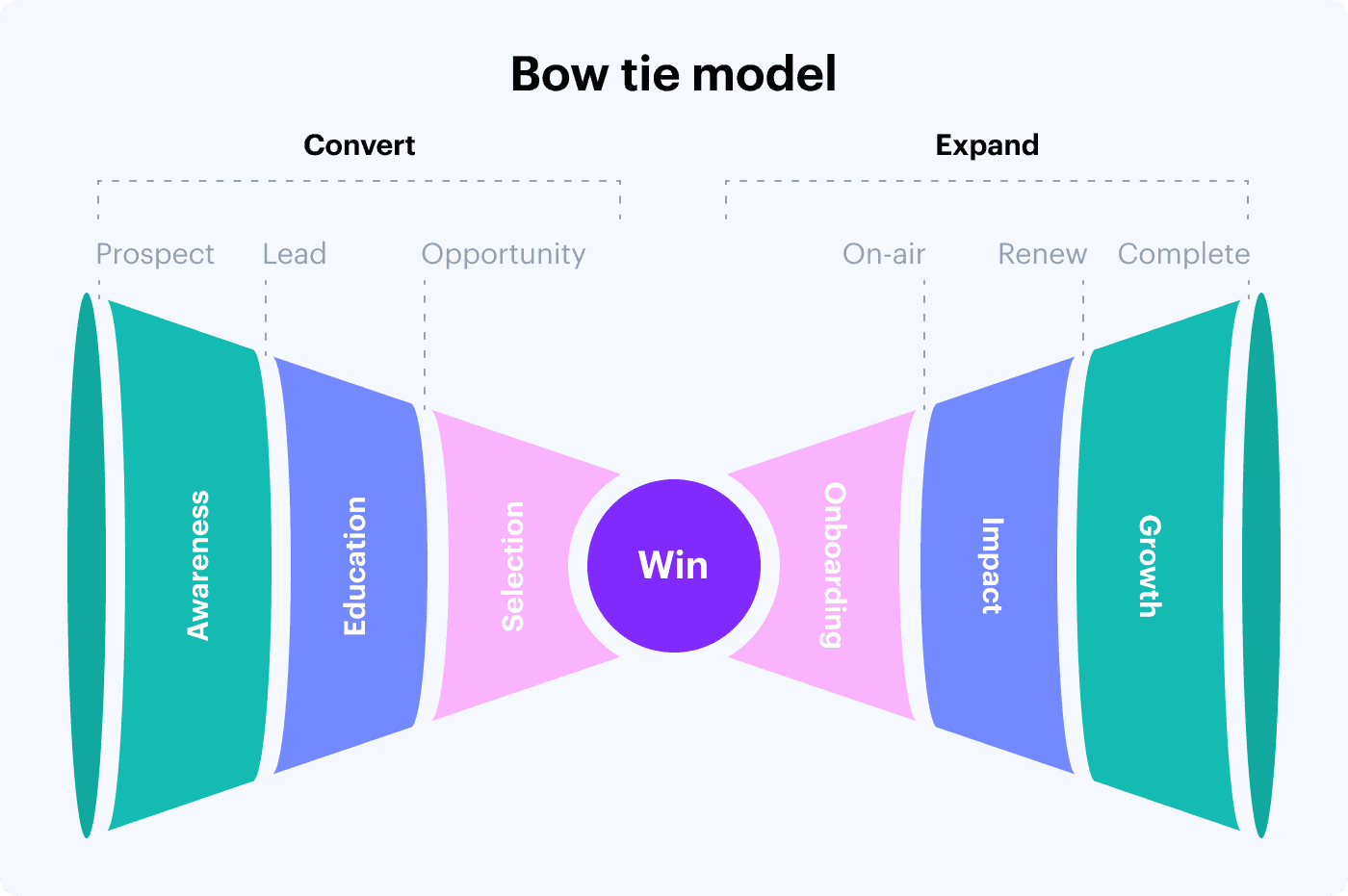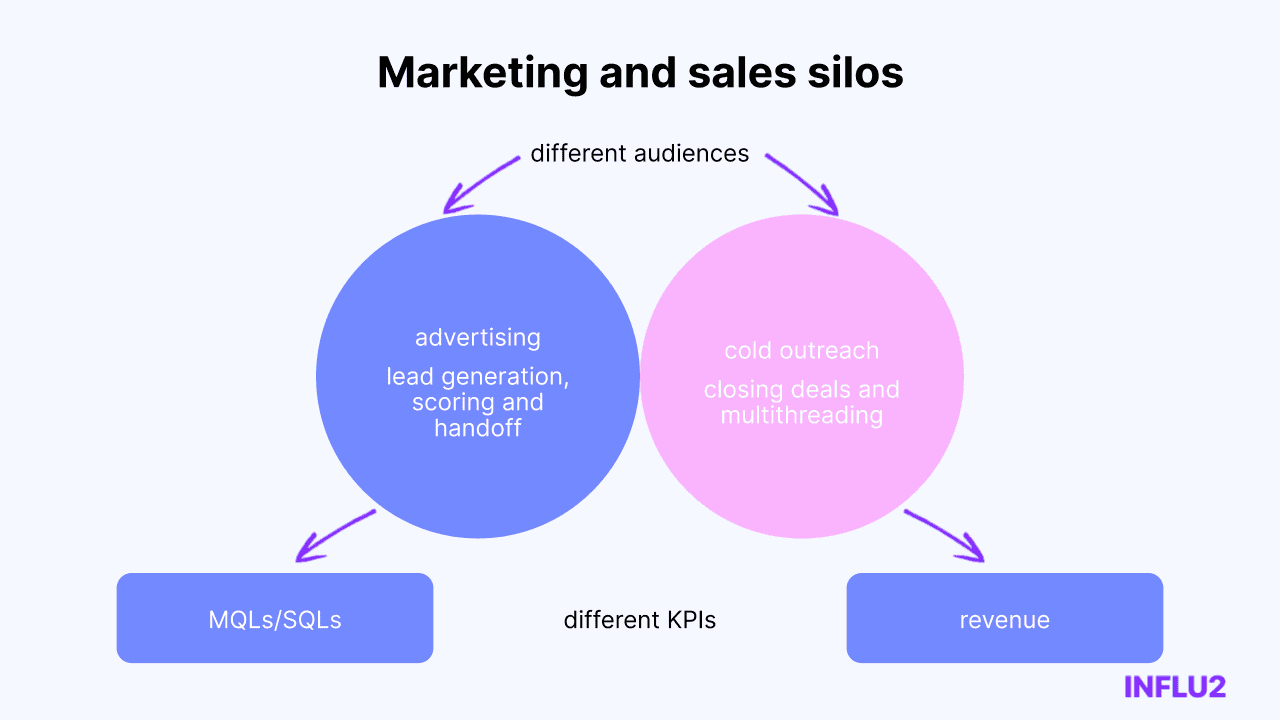Ditch the Funnel for the Bow Tie

This article is based on Joe McNeill's take originally published on Adweek.
Today's enterprise sales have evolved far beyond the linear approach. However, the traditional funnel model has stayed the same for decades. In the modern landscape, it is just too simplistic for the intricate procurement landscape within modern enterprises. It also doesn't take into account all the (rather significant) stages that happen after the deal is won.
Enter the bow tie funnel.
The origins of the bow tie model trace back to 2009, when it first emerged in the travel industry. It was later adopted by Winning by Design for B2B marketing. In the first version of the bow tie model, travelers had to narrow down destination, date, and price options before committing. The commitment represented a won deal but not the end of their purchasing journey (the pun is very much intended). After that, they could require additional services like seat upgrades, baggage fees, car rentals, and hotels. And that led to more sales opportunities.
If we look at this model from a business point of view, it makes a lot of sense. The left side of it encompasses all the traditional stages of the funnel – awareness, consideration, purchase. But then retention and expansion get equal representation on the right side of the bow tie funnel.

Why the bow tie funnel?
Outdated approaches suggest that marketing and sales operate independently within the funnel, culminating in a sale. However, enterprise revenue generation is intricate, resembling more of an art than a science. Unlike the traditional model, the bow tie funnel takes into account the three critical factors that influence enterprise purchase decisions in 2023:
The rise of buying groups
Purchase decisions are now being made by cross-functional buying groups. Over the past decade, the average size of these groups has doubled, ranging from six to ten members, as reported by Gartner. Influ2's research shows that the committees of 21+ people where sales talk to at least 11 people simultaneously show the highest conversion rates.
Marketing can support multithreading by expanding their relationship-building efforts beyond the key players to include all buying committee members. Embracing distinct personas within these committees (CIO, CMO, Legal, Procurement, etc.) is pivotal for success. Each member holds unique requisites, timelines, and influences within the decision-making process. Sales is now about persuading a diverse group rather than a lone decision-maker.
More revenue opportunities after a deal is won
There's one strategy that can bolster success even during downturns, and that is working with existing customers. Customer retention and expansion pay off big time in terms of ROI. If marketing's role ends at the MQL stage, valuable growth opportunities are missed.
That's why it's important to pay just as much attention to upselling activities as we do to converting prospects. To create more opportunities with existing customers, you need to understand their challenges and needs and design solutions that will increase revenue. It will result in increased sales volume, upgrades, or expansion into new products and services.
The need for alignment between marketing and sales
As long as marketing, sales, and customer success have different objectives, there's always going to be a misalignment that results in siloed operations. Each team adapts the funnel to suit internal goals, often with inadequate communication or collaboration. While the funnel metaphor suggests continuity, in practical application for revenue generation, it's anything but – in fact, it's broken.

How the bow tie funnel helps revenue teams focus on what's really working
The conventional funnel only presents part of the equation. Rather than focusing solely on customer acquisition, retaining customers is equally vital. Successful organizations must expand their perspective, embracing the bow tie funnel.
Devote attention to post-conversion stages to ensure a positive experience that transforms customers into loyal advocates. In fact, the best way to keep a customer is to grow a customer.
The bow tie funnel helps all revenue teams better grasp distinct needs and expectations of buyer personas within purchasing groups. It then allows them to tailor their strategies and messaging accordingly.
In this approach, teams don't merely pass on leads; they collaborate, leveraging their expertise to serve prospects and customers better. They share insights, communicate, strategize, and work collectively throughout the buyer journey. By establishing clear, shared goals, collective success becomes a reality.
Ensuring that every customer touchpoint is consistent, relevant, and actionable leads to a cohesive buyer journey which leads to better budget efficiency. By working together, you can optimize effort and resources—making the available budget work harder.
So, drop the MQLs. Abandon the funnel. Place customers at the center of all your efforts – and the collaborative strategy will build around it.

Chief Revenue Officer at Influ2 and a B2B Technology Sales Leader. Joe combines an enthusiasm for client service delivery, employee empowerment, and robust revenue operations to position organizations to scale & grow. Whether overseeing commercial teams, accelerating profitability by boosting conversion rates & deal size, or increasing YoY revenue, Joe McNeil has a career of experience skyrocketing repeatable & scalable business growth.


